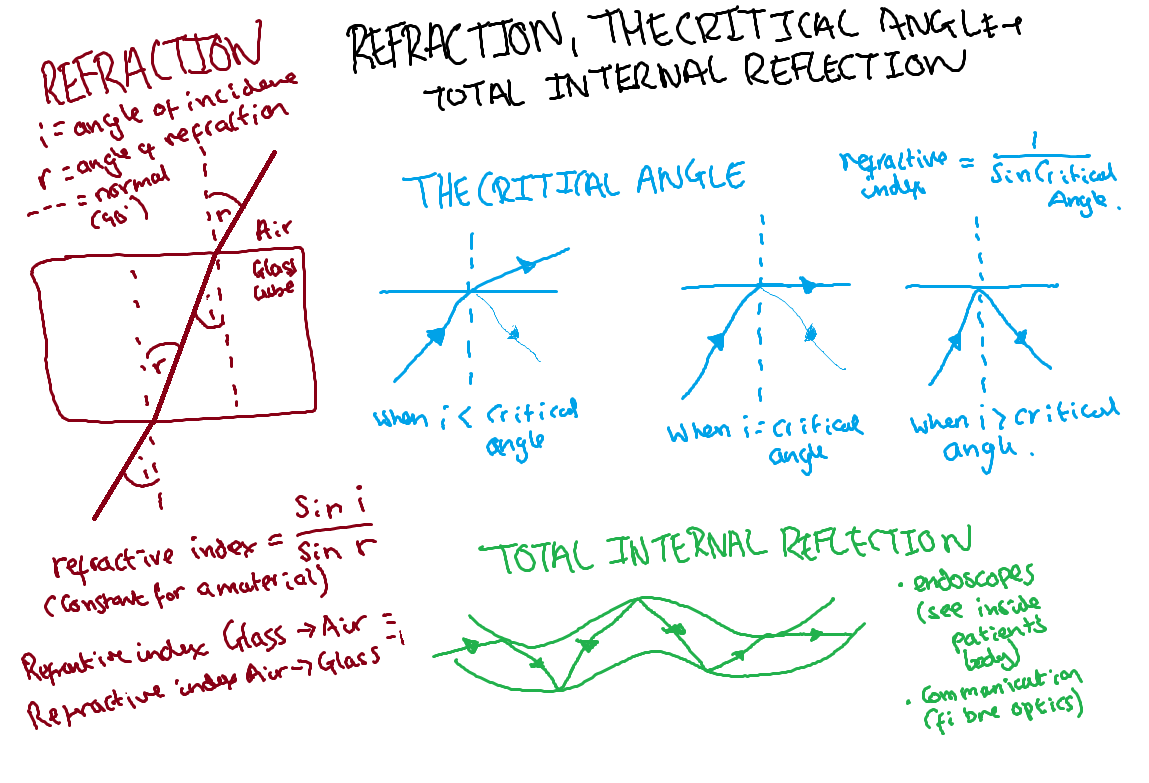Total internal reflection
An effect that combines both refraction and reflection is total internal reflection. Consider light coming from a dense medium like water into a less dense medium like air.When the light coming from the water strikes the surface, part will be reflected and part will be refracted. Measured with respect to the normal line perpendicular to the surface, the reflected light comes off at an angle equal to that at which it entered at, while that for the refracted light is larger than the incident angle. In fact the greater the incident angle, the more the refracted light bends away from
 the
normal.
Thus, increasing the
angle of incidence from path ``1'' to ``2'' will eventually reach a point
where the refracted angle is 90o, at which point the light
appears to emerge along the surface between the water and air. If the
angle of incidence is increased further, the refracted light cannot
leave the water. It gets completely reflected. The interesting thing
about total internal reflection is that it really is total. That is 100% of the light gets reflected back into the
more dense medium, as long as the angle at which it is incident to the
surface is large enough.
Fiber optics uses this property of light to keep light beams
focussed without significant loss.
the
normal.
Thus, increasing the
angle of incidence from path ``1'' to ``2'' will eventually reach a point
where the refracted angle is 90o, at which point the light
appears to emerge along the surface between the water and air. If the
angle of incidence is increased further, the refracted light cannot
leave the water. It gets completely reflected. The interesting thing
about total internal reflection is that it really is total. That is 100% of the light gets reflected back into the
more dense medium, as long as the angle at which it is incident to the
surface is large enough.
Fiber optics uses this property of light to keep light beams
focussed without significant loss.
The light enters the glass cable, and as long as the bending is not too sudden, will be totally internally reflected when it hits the sides, and thus is guided along the cable. This is used in telephone and cable TV cables to carry the signals. Light as an information carrier is much faster and more efficient than electrons in an electric current. Also, since light rays don't interact with each other (whereas electrons interact via their electric charge), it is possible to pack a large number of different light signals into the same fibre optics cable without distortion. You are probably most familiar with fibre optics cables in novelty items consisting of thin, multi-coloured strands of glass which carry light beams.













0 comments:
Post a Comment